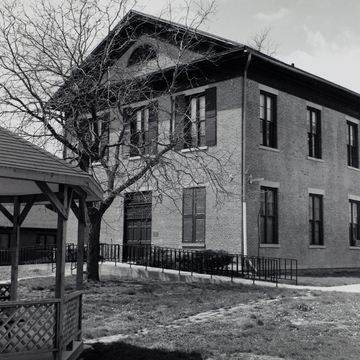The plainness of this Greek Revival building did not appeal to Andreas when he wrote of it in 1875, “The courthouse is not a building of any particular architectural beauty, and does not present a very imposing appearance.” 7 The brick building about which he had reservations is the oldest county courthouse in Iowa. It is a simple rectangular structure with narrow enclosed pedimented gable ends; its fenestration consists of two rows of un-decorated windows. The only purely decorative details are the wide banded entablature and the lunette windows within each of the gable ends. Inside the building a large courtroom occupies much of the second floor. The courthouse remains essentially unaltered, with the exception of the loss of its low square tower and the shutters that flanked each of the windows. The courthouse was built by Edwin Manning, a founder of the town; its design was supposedly drawn up by the first members of the County Commission.
Notes
Ibid., 494.






